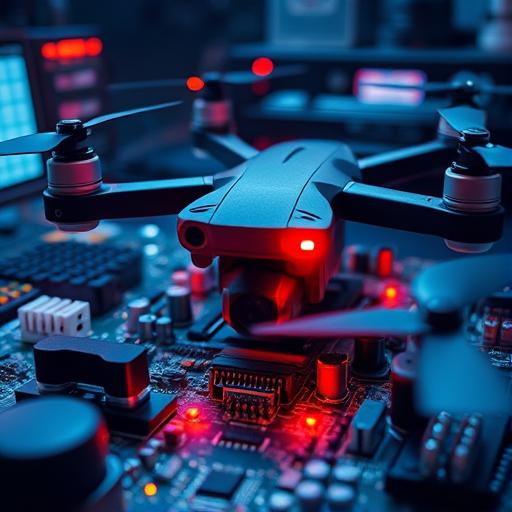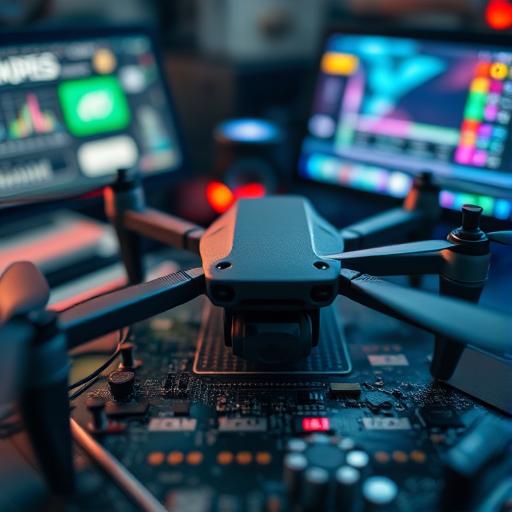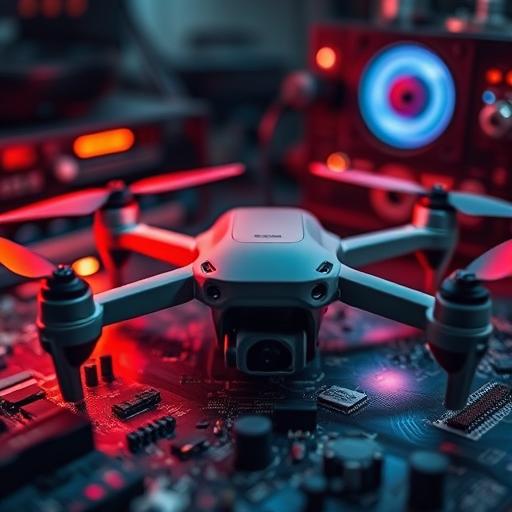Drones have transformed from military tools to mainstream tech gadgets, revolutionizing industries from photography to logistics. Their evolution reflects rapid technological advancements, making them more accessible, intelligent, and versatile than ever before. From early prototypes to today’s AI-powered devices, drones have reshaped how we capture the world, deliver goods, and respond to emergencies. This article traces their journey—from wartime origins to cutting-edge innovations—and explores what the future holds for these incredible flying machines.
The Early Beginnings of Drones (1900s – 2000s)
Military Origins and Early Prototypes
The concept of unmanned aerial vehicles (UAVs) dates back to World War I, when rudimentary radio-controlled aircraft were tested for reconnaissance. By World War II, more advanced drones like the Firebee were deployed for surveillance. These early models lacked precision but laid the groundwork for future developments.
Transition to Civilian and Commercial Use
Post-war, drones shifted from military-only applications to civilian use. Early commercial drones in the 1980s and 1990s were bulky and expensive, primarily used for agriculture and environmental monitoring. Their limitations—short battery life and limited maneuverability—kept them niche until technological breakthroughs changed the game.
The Rise of Consumer Drones (2000s – 2010s)
Breakthroughs in Technology and Accessibility
The 2000s marked a turning point with the introduction of GPS and stabilized cameras. The Parrot AR Drone (2010), one of the first consumer-friendly models, featured a built-in camera and remote control. Meanwhile, DJI’s Phantom series popularized affordable, user-friendly drones, making aerial photography accessible to hobbyists and professionals alike.
Impact on Hobbies and Aerial Photography
Drones revolutionized photography by offering affordable aerial perspectives. Filmmakers, journalists, and real estate agents adopted them for dynamic shots and bird’s-eye views. The rise of drone racing leagues further fueled interest, turning the technology into a global phenomenon.
Modern Innovations and Industry Disruptions (2010s – Present)
Advanced Features and AI Integration
Today’s drones boast AI-powered features like obstacle avoidance and automated flight modes. Models like the DJI Mavic series offer foldable designs, high-resolution cameras, and extended battery life. These innovations cater to both professionals and casual users, expanding drone applications.
Distribution Analysis
Option A (33%)
Option B (33%)
Option C (34%)
Distribution chart for The Evolution of Drones in the Tech Gadget Industry

Drones in Delivery, Agriculture, and Emergency Services
Companies like Amazon and Wing are testing drone deliveries, while farmers use drones for precision agriculture—monitoring crops and optimizing irrigation. Emergency services deploy drones for disaster relief, search-and-rescue operations, and real-time data collection.
Regulatory Challenges and Safety Concerns
As drones become ubiquitous, regulations have tightened. The FAA and other agencies enforce rules on licensing, no-fly zones, and privacy. Concerns about drone misuse—from privacy violations to collisions—highlight the need for balanced governance.
The Future of Drones: What’s Next?
Autonomous and Swarm Technology
Future drones may operate fully autonomously, using swarm intelligence for tasks like package delivery or environmental monitoring. Logistics companies are exploring fleets of drones working in unison to streamline operations.
Next-Gen Sensors and Beyond-Visual-Line-of-Sight (BVLOS) Flying
Advances in sensors and 5G connectivity will enable BVLOS flying, allowing drones to operate far from their controllers. These capabilities could revolutionize industries like inspection, surveillance, and transportation.
Environmental and Ethical Considerations
Sustainability is a growing focus, with eco-friendly drone designs reducing carbon footprints. Ethical debates also continue, particularly around surveillance and automation, as society grapples with the balance between innovation and privacy.
Conclusion
From military tools to everyday gadgets, drones have come a long way, reshaping industries and hobbies alike. Their evolution—driven by AI, miniaturization, and regulatory progress—promises even greater advancements. As technology accelerates, staying updated on drone innovations will be key to unlocking their full potential. The sky’s the limit!

FAQ Section
Q1: What was the first commercially available consumer drone?
The Parrot AR Drone (2010) was one of the first consumer-friendly drones with a camera and remote control.

Q2: How have drones impacted the photography industry?
Drones enabled aerial photography and videography at an affordable cost, revolutionizing filmmaking, real estate, and journalism.
Q3: Are drones regulated globally?
Yes, countries like the U.S., EU, and China have strict regulations on drone usage, including licensing and no-fly zones.
Q4: What are the most advanced drone features today?
Modern drones include AI-assisted flight, 4K/8K cameras, obstacle avoidance, and long-range transmission.
Q5: Can drones be used for delivery services?
Companies like Amazon and Wing are testing drone deliveries, but widespread adoption depends on regulatory approvals.
